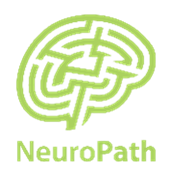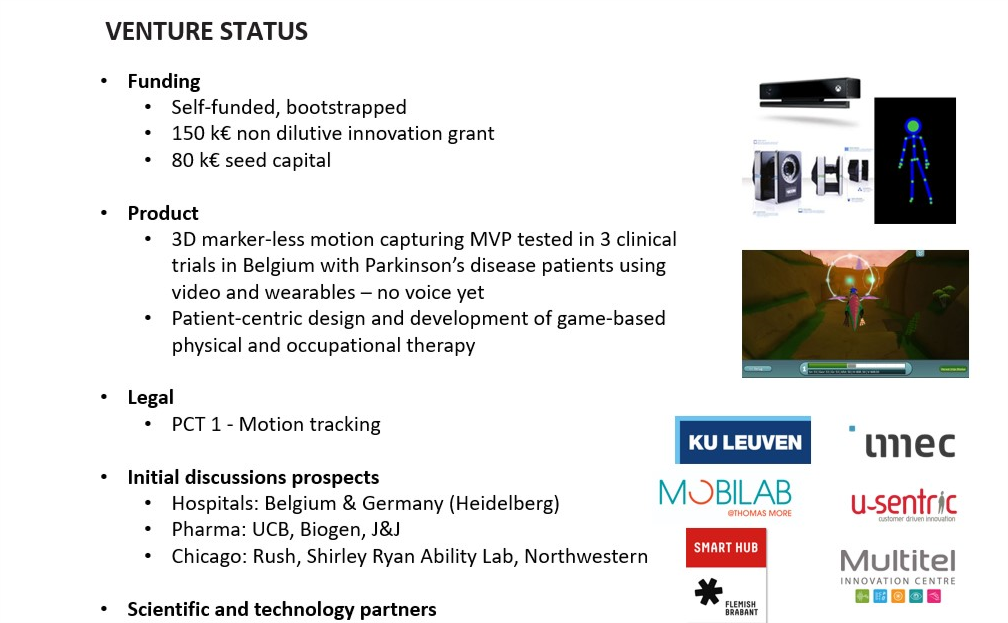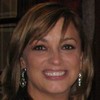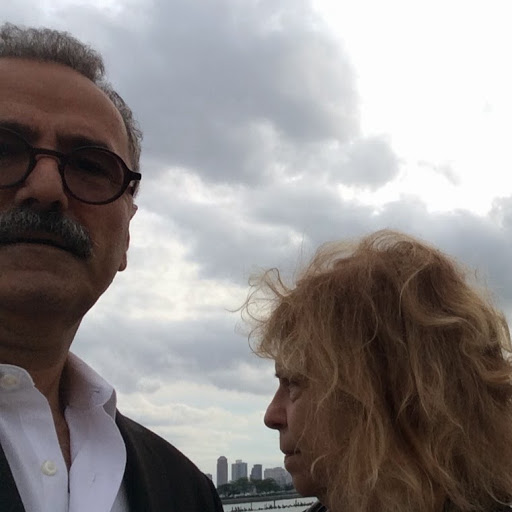NeuroPath: Bridging the gap between in-clinic and at home patient care
NeuroPath is a patient generated health data and device agnostic platform integrating deep learning approaches from which to develop actionable & adaptive clinical support to improve health care.
Chicago, IL United States Home-Based Care Wearables AMIA challengeAbout our project

The problem we solve: THE NEED FOR BETTER PATIENT MONITORING: 1 vs 8,765 HOURS PER YEAR "I see my neurologist every six months for a thirty-minute session and thus spend every year a total of one hour being observed with the UPDRS. That leaves 8,765 hours per year when my disease is not being monitored." (Sara Riggare, Parkinson's disease patient and advocate for patient empowerment). While we currently focus on Parkinson's disease (PD), our system can be applied for all neurological/movement disorders.
About our solution: NeuroPath develops a patient generated health data and device agnostic platform integrating deep learning approaches from which to develop actionable & adaptive clinical support to improve health outcomes. We use a combination of video recordings, wearables and speech analysis to capture patient health and mood data. The platform we envision will track motor and non-motor features of patient activities of daily living and provide real-time feedback to the patient, the family and the caregivers.

Progress to date:
Today, we have a Minimal Viable Product that we are field testing. It allows us to capture patient movements with a 3D camera and computer vision algorithms. Our platform will integrate data from commercial wearables such as accelerometers perform analytics to assess motor skills and eventually we will work towards real-time disease state assessment.
We have ongoing clinical trial testing in 3 studies in Belgium with in-clinic and remote patient monitoring.
In the future, we envision incorporating non-motor biomarkers linked to speech, mood, sleep quality and physiological signals(heartrate, blood pressure) into our platform. Also we are in beta testing stage of an exergame to try and make therapy more fun as well as more accessible to a larger demographic of patients.
About Our Team
Creator: Bart Chmielecki
Location: Illinois
Education: Medical University of Warsaw
Bio: Medical graduate/entrepreneur looking to disrupt the healthcare space by advancing movement disorder care and mitigation via remote patient monitoring.
Title: Project Manager
Advanced Degree(s): MD
About Team Members
Benoit Tas
CEO and FOUNDER, MBA
Biography: I am an entrepreneurial and creative leader with international experience, backed by solid finance skills and a strong background in blue chip consumer goods companies, private equity and medium sized companies.
Title: CEO and FOUNDER
Advanced Degree(s): MBA
LinkedIn:
https://www.linkedin.com/in/benoit-tas-b65a7b/
Eric Clark
data scientist, PHD, Masters of Applied Science
Biography: Data Scientist responsible for platform design and application. Have prior experience helping to build the experimental design for project Bluesky: integrating wearables and sensors into clinical trials as a contractor for Pfizer’s developmental medication to treat Parkinson’s Disease.
Title: data scientist
Advanced Degree(s): PHD, Masters of Applied Science
LinkedIn:
https://www.linkedin.com/in/eric-clark-628925137/
About Our Company
NeuroPath
Location: 222 W Merchandise Mart Plaza
1230
chicago, IL 60654
US
Founded: 2018
Website: https://neuropath.life:8443/NeuroPath/
Product Stage: Prototype/MVP
Employees: 3-5
How We Help Patients
Regular home monitoring will motivate patients to adhere to a care path of physical exercise and medication. Structured exercise improves the functional performance of patients and leads to a better quality of life. This results in net monetary benefits (NMB) for the health system. The annual excess cost of a Parkinson's disease patient is over $300k per year, and studies show that a 20% slowdown in the progression of the disease can lead to a NMB of $75k per patient. The platform we envision will track motor and non-motor features of patient activities of daily living and provide real-time feedback to the patient, the family and the caregivers.
How We Help Physicians
The platform we envision will track motor and non-motor features of patient activities of daily living and provide real-time feedback to the patient, the family and the caregivers. With the data received each physician will have access to each patient's data and therefore will be more informed on each patient with data on compliance as well as adherence to care path provided. With the new data at hand we believe the physician will make a more informed decision as well as individualizing treatment strategy for each patient. One of our future concepts is to alert the necessary care path provider when there is a high level of variability from established baseline. This will provide the patient and entire care team with valuable data to help or even prevent future issues.
How We Help Hospitals
In the future we want to reduce the burden on the hospitals by identifying high risk patients through remote data analysis to reduce unnecessary admissions.
How We Help Partners
By filling the void between in-clinic care and at home care we hope to reduce admissions, increase patient awareness, and increase compliance/adherence to care path strategy. This in turn will lead to a more tailored care path strategy along while empowering patients and care path providers alike. We think our device agnostic monitoring strategy will help Big Pharma in better monitoring of movement disorder drug trials, insurance companies by identifying and rewarding compliant patients, and help physicians with a collection of concise data to save them time as well as aiding them in making a more informed treatment strategy. By providing a remote exercise system we can help physical therapists and occupational therapists concentrate on the more distressing cases. Each of the providers will get notified of the patients progress thereby forming a strong bond of communications between care path organizers.
Challenge Mission
Affiliation(s)
Alice Nieuwboer, Full Professor KU Leuven, is the Head of the Neuromotor Rehabilitation Research Group at the Department of Rehabilitation Sciences at KU Leuven, one of the world’s leading departments in neurorehabilitation. Dr. Gaëtan Garraux, neurologist, heads up MoVeRe, a group of scientists involved in the study and care of patients with Parkinson's disease and other movement disorders. Anne-Sophie Bridoux and Jean-Yves Parfait are engineers at Multitel, a research and innovation centre that offers services to companies and develops new technological concepts in signal & embedded systems and computer vision. Lieven De Maesschalck is Innovation Manager at Mobilab, a multidisciplinary centre of expertise, conducting applied research into wellbeing and technology.Key Milestones Achieved and Planned
Q2 to Q3 2017: developed a Minimal Viable Product based on founders’ funds and bootstrapping. Q4 2017: formed a partnership network with KULeuven, Mobilab, U-Sentric, Imec, Multitel. Q1 2018: awarded a €150k non-dilutive innovation grant from Smart Hub Flanders. Q2 2018: • increased our capital by €80k from a Swiss seed investor • filed US patent application on marker less motion capturing of subjects Q3 2018: • started 3 clinical validation projects with 2 university hospitals (CHU Liège, KU Leuven) and one regional hospital (HHZ Lier/Mobilab) in Belgium • NeuroPath admitted at MATTER incubator in Chicago and selected for the CIM program as of November 2018 https://matter.health/programs/chicago-innovation-mentors/Our Competitive Advantages
Several companies track aspects of PD symptoms through wearables or apps. 3D video and computer vision algorithms have made great progression recently. So far, no holistic platform exists, but giants like Google, Amazon or Apple are looking into it. As we aim to be device agnostic, our competitive edge lies in the creation of a library of pathology specific movements through AI and deep learning combined with specialists’ input. Any device or tool that provides raw data is a potential value chain partner. NeuroPath will add value to front-end users and valorize data with pharma, CRO and payers. • Front-end users and Key Opinion Leaders: neurologist and informed patient at the center • Care path ‘sentinels: multifunctional care takers providing additional data input • NeuroPath computational intelligence: structuring data and AI/ML providing insights • Valorization for Pharma and Clinical Research Organizations: real world evidence - faster data collection - market access support - eaBarriers to Entry
We have one US patent application pending and 3 more to be disclosed in the next weeks. We have academic partners specialized in Parkinson’s disease motor analysis, a technology partner specialized in signal embedding and computer vision algorithms and can use 2 movement analyses labs for validation and development.Funding, Partners and Alliances To Date
Funding: Self-funded, bootstrapped €150k non-dilutive innovation grant €80k seed capital €200k non-dilutive technology support grant Product status: • 3D marker-less motion capturing MVP tested in 3 clinical trials in Belgium with Parkinson’s disease patients using video and wearables – no voice yet • Patient-centric design and development of game-based physical and occupational therapy prototype Partners: Scientific/academic partners chosen for their gold standard motion capturing labs -KU Leuven: clinical trials validating 3D marker less motion capturing devices, wearables and sensor interfaces -Mobilab: living lab where in-home monitoring tests can be done Clinical partners -Hospitals of CHU Liège, Heilig Hart Ziekenhuis Lier, UZ Leuven (B) Technology- -Imec: smart health research: wireless devices and sensors proven to provide medical grade raw data -Multitel: 3D marker less motion capturing, computer visioning, diagnostic imaging, speech recognitionInnovation Details
Intellectual Property Summary
•PCT 1 - Systems and Methods for Markerless Tracking of Subjects
Patent Link
211590-9001-US02
Clinical Information
We have 3 ongoing clinical trials in Belgium and would like help funding and setting up a clinical trial in the United States. Also, we have established communications with a few local academic institutions (RUSH, Northwestern, Shirley-Ryan, and Warren-Barr) looking for a symbiotic partnerships to aid in confirming the viability of our product.
Regulatory Status
We need help getting FDA clearance for running an optimal clinical trial.
How we will use the funds raised
Expanding the team to 2 data scientists, 1 software engineer, 1 GUI expert, 1 business development.
Accelerate product development based on the data factory and new features (non-motor, voice, GUI)
Thank You
"I see my neurologist twice a year, about half an hour every time. That’s one hour per year in healthcare for my Parkinson’s disease. During the same year I spend 8,765 hours in selfcare, applying my knowledge and experience together with what I get from my neurologist to manage a difficult condition as best I can. Only during the one hour per year am I in direct contact with neurological specialty care and its clinical practice and guidelines.
And it’s also during this one hour that my condition is evaluated by my neurologist and my treatment is prescribed. But it’s during the 8,765 hours of selfcare that I put my treatment into action. I take 6 prescription drugs, 6 times a day, in 5 different combinations, with 6 different time intervals. Because let’s face it, my doctor doesn’t even know if I take my medications or not.
It is also during my 8,765 hours of selfcare that I can observe the effects of my treatment. And what if I could register my observations in a systematic way and bring to my next neurologists’ visit?" - Sara Riggare parkinson's disease patient and advocate for patient empowerment.
We want to help the patients for the 8,765 hours spent without clinical supervision.
http://www.riggare.se/
Updates
No updates found .
Supporters
Help us find best new ideas to fund by telling us what you think. Your feedback goes straight to the team behind this project in private, so tell them what you really think.
Index Score
42
Score
0
Score
2
Likes0
Partners0
Pilots0
Follows-
This campaign has ended but you can still get involved.See options below.
Help us find best new ideas to fund by telling us what you think. Your feedback goes straight to the team behind this project in private, so tell them what you really think.




